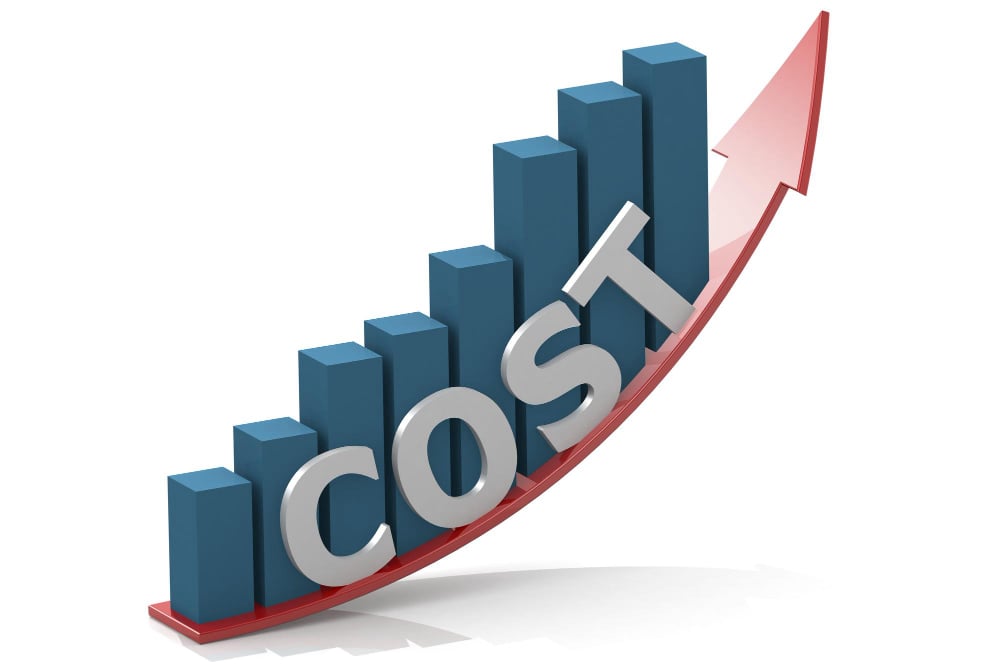Pricing



Going into business, especially for the first time can be a daunting task for many.
And a vast amount of driving instructor join the industry having never run a business before.
The promises of 50K + per year is enticing for many to have a go, usually because they have been on minimum wage, or a wage that just doesn't seem to justify the work that they do.
They see these all glowing adverts about working for yourself, being your own boss, earning 50K or more and think "that's for me".
Where in true reality, that is NOT what you are going to earn.
The 50K + adverts always forget to mention you'll have overheads, and that the 50K + is actually the turnover of the business.
You then need to think of a multitude of things that are going to have to come out of that 50K.
BEFORE GOING INTO BUSINESS or signing on the dotted line.................... DO YOUR HOMEWORK FIRST!
Get out a pen and paper and start doing the maths.
Anyone who owns a car knows only too well that a car MUST be Taxed, Insured and have a valid MOT.
These don't grow on trees.
Depending on the size of your car Road Tax is going to change. What is yours?
Insurance on average you're probably looking at a minimum of £500 upwards
MOT. The cost of the MOT is quite small, but what if things need doing to your vehicle to pass? Have you allocated a budget for this?
Then throughout the year your general running costs.
Fuel, what do you get out of your car MPG?
This will probably increase, especially on days when you have your newer pupils as they take longer getting up into the 3rd and 4th gears, are usually always revving way too much. So just as an approximate figure let's say you put £50 of fuel a week into the car, that's £2,600 straight away.
Are you paying for a recovery breakdown service?
Your may live in a location where your pupils are miles away from your home location. Who's paying for the fuel to get you to and from their house plus the time it takes you to get there and back. Your pupils are only paying for the time they are in the car with you. So you need to consider these factors as well.
So we've clicked off just the most regular overheads you are going to face annually.
Now think about things like tyres. Potholes are everywhere, your pupils guaranteed will clip a kerb or two which will probably take a gouge out of your tyre causing you to replace them. Did they damage a wheel in the process? What about track rod ends, steering racks, wishbones, shock absorbers, suspension, etc? Any of these items could also get damaged in the process.
Keeping your car clean and tidy.
Are you paying for a car wash each week or are you doing it yourself?
A car wash is probably going to be somewhere around £5+ each time
But also purchasing car shampoo or car wax, cloths, sponges, buckets, screen wash,air fresheners a hose, a pressure washer, a vacuum.
Engine and vehicle parts
Topping up your oil? Brake fluid? Possibility of new clutch depending on age and how good your pupils may or may not be?
Brake pads and discs? Wiper blades? Replacement bulbs? recharging your air conditioning system ?
These are just some of the very basic items that you will need to consider factoring in to your pricing.
Obviously, some of the above items will not necessarily need to be changed annually, but there is always a chance!
Mechanical parts are only as good as the manufacturer and the materials they use, and the abuse the get for the people who drive them. Pupils don't consider this when they are driving your car, it's not theirs so they are not the ones paying the bill.
So we've talked a little bit about your vehicle, what else is there that you should consider as an overhead?
Is you business paying for Public and Private indemnity Insurance?
Are you taking care of your accounts at the end of the year or are you paying an accountant?
Are you running the business from home?
You should check with your local council that this is permitted in the first place. (usually for driving schools there is not a problem)
You should however, advertise your business at your businesses registered address. If that is your home, you should have a sign to inform that this is so. There is no guidance that i have found to say what size any signage should be, but it should show that this is where your business operates from.
Do you have an office at home? do you need a desk? Computer? Paperwork? Folders? a Printer? Training materials?
How is that office lighted and heated? All these items are tax deductible on your end of year accounts, but someone is paying for them in the first place.
How do you account for these or are you not worrying about it because it's just part and parcel of the bills from your house?
If you are not separating them from your normal household bills then you're not running your business effectively.
Most accountants will suggest you tick a box on your self assessment form which allows a certain percentage to be allocated as an allowance for tax purposes or you can itemise each of your household bills and allocate certain percentage of those bills to cover lighting and heating in your used rooms parts of your house.
However, if you pay for a premises to run your business from, you need to cover everything from your business expenses, which are then fully claimable on your tax return, and not from your private expenses.
Do you have a household phone? A mobile phone? A website? Any advertising you pay for?
If you have a household phone you will ideally want one that is purely used for business purposes only, that way it makes accounting for it much easier.
Likewise your mobile phone, if you are using it purely for business purposes it is easier when accounting for the use.
If you have a website, fees such as the hosting, the domain name each year or 2, are you paying someone to look after it for you?
Are you or they creating content for it, and are you paying them to do so? if so it needs to be accounted for.
Business subscriptions
Do you belong to any professional organisations.
Things such as diary management apps
Driving organisations such as DIA, ADINJC, MSA, etc
All any any other item that may be used for the running of your business needs to be receipted and accounted for each year, but also needs to be accounted for when you are working out your pricing structure.
So many people forget one of the biggest factors in their pricing structure, and that is their own time.
Let's just do some simple maths and set an example hourly rate.
You charge an hourly rate of £30 for a driving lesson.
You drive to your pupil 30 minutes away, you supply the 1 hour lesson, and then you drive home 30 minutes away.
WAS YOUR HOURLY RATE £30?
Yes your hourly rate for your lesson was indeed £30, however you used 2 hours to achieve it, so in true reality your hourly rate has now dropped to £15 per hour.
It still however isn't a true reflection of your hourly rate though, because not only did it take you an hour to get there and back, you also used fuel to get there and back thus eating into that £15 rate even further.
You could continue to stretch that boundary even further if you factored into the sum, wear and tear on your vehicle (at some stage things will need replacing that wouldn't have needed replacing had the car not moved).
The percentage of your insurance premium that covered you for that journey.
The percentage of public and personal liability insurance.
DON'T just think wow i'm on £30 an hour that's not a bad wage, if you haven't consider ALL the factors that come into creating that hourly rate.
Push that simple maths a little further.
How many hours allowing for a reasonable work life balance could you do a day?
Most workers work an 8 hour day, so let's go with that.
If you worked an 8 hour day but had to travel 30 minutes to get to each pupil and 30 minutes back again.
you start at 8.30am, it take you half an hour to get to your pupil
arrival time 9.00am
an hour session 10.00am
30 mins to the next pupil 10.30am
an hour session 11.30
30 mins to the next pupil 12.00
an hour session 13.00
30 mins to the next pupil 13.30
an hour session 14.30
30 mins to the next pupil 15.00
an hour session 16.00
30 mins to the next pupil 16.30
an hour session 17.30
30 mins to get home. 17.00
an hour session 18.00
30 mins to the next pupil 18.30
an hour session 19.30
30 mins drive home 20.00
To create an 8 hour working paid for day you have to start at 8.30 in the morning but don't finish until 20.00
This means you have had to actually work an 11 and a half hour day to earn 8 hours worth of pay! And there was no break at all throughout the whole day!
Even if you created 2 hour lessons with travelling time being the same.
Start 8.30
arrival time 9.00
2 hour session 11.00
30 mins to the next pupil 11.30
2 hour session 13.30
30 mins to the next pupil 14.00
2 hour session 16.00
30 min to the next pupil 16.30
2 hour session 18.30
30 mis to get home 19.00
You still start at 8.30am but don't get home until 19.00. It still works out as a 10 and a half hour day for 8 hours paid work and no break!
So what should have been £310 working time only earns you £240. You've lost £70 in just one day from your travelling time.
Over a 5 day week that's £350 lost a week - £18.200 over a year
Now these figures are approximate when we say 30 mins travelling time, but you will need to wee, you will need to take a break at some stage, and you really don't want to be working 11 and a half hour days every single day of the week otherwise you will be totally drained and not giving your best to your pupils.
Be VERY HONEST with yourselves when working out what you need to earn, how many hours a week will need to be worked to achieve that, will a good work life balance work within those hours and will your bills and profit work within that as well?
Set some boundaries up as to your catchment areas if you can, and if you are needing to travel further to get to pupils outside of those catchment areas you need to consider charging more accordingly. If someone specifically wants your services THEY WILL PAY EXTRA. if they are not happy to pay more, then there are always other instructors in their areas that they can use. DON'T SELL YOURSELF SHORT!!!

It is extremely easy to be the sheep and follow what everyone else is doing!
You become an instructor, you have a look around at what everyone else is doing especially price for lessons wise.
And then you just "fit in"
If you jumped into the training industry market just by finding out what the average driving instructor in your area charges for their lessons and followed suit without first calculating what YOUR OVERHEADS ARE, you could be in a heap of trouble.
Your overheads for running your business are one thing, but you also need to work out your general everyday household running costs and then making a profit as well.
What would happen if you just run your business to cover the running of your business and the running costs of your household bills but then fell ill, your car went off the road as a right off, the market slumped and you didn't get as many pupils as you used to, we had another pandemic?
You've not been making a profit so do not have a buffer to keep you afloat until the good times come back again. Very quickly, whatever saving you may have will be depleted and before you know it you are out of business, bankrupt!
And once you've done this, to include making a profit as well, then work out how many hours you intend to work each week.
Divide your total overheads and profit into the physical amount of hours you can do over the year, and this will bring you with your hourly rate that you need to charge per lesson.
Ensure you create a study set of TERMS AND CONDITONS for your pupils.
This will need to explain how you work, what you expect from your pupils, how you cover GDPR, cancellation fees etc.
But ensure you have these.
The cancellation fee is now becoming a lot more standard within the industry and accepted by pupils.
If you are honest and clear with them right from the start that you will charge in full for late lesson cancellations, then they won't be shocked if it happens.
If you try getting lesson fees out of them after they cancel at the last minute but were totally unaware of a cancellation policy then it would be expected that they would be a tad annoyed, even to the extent of finding another driving instructor.
BE CLEAR WITH YOUR FIGURES AS WELL AS YOUR PUPILS.
If you have all the facts to running your business, the only person who makes it a success or failure is you!